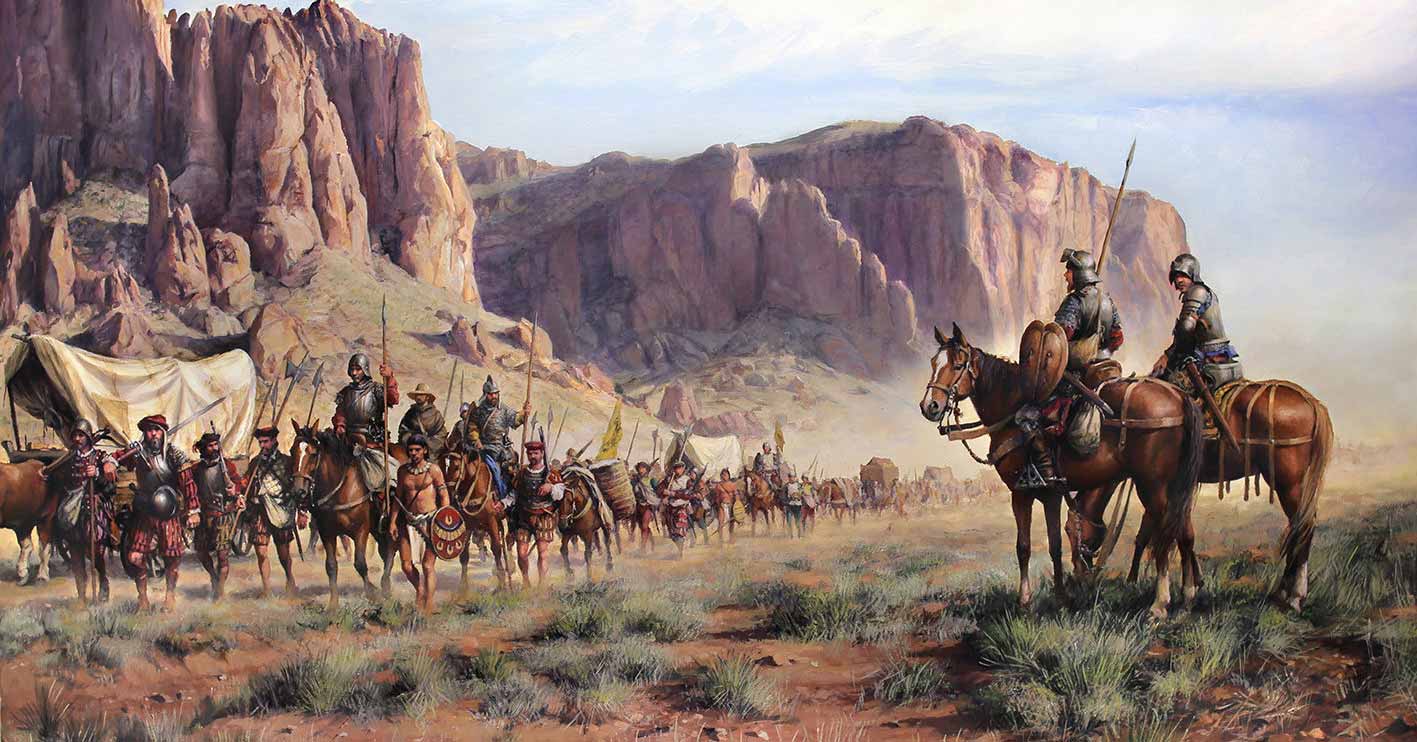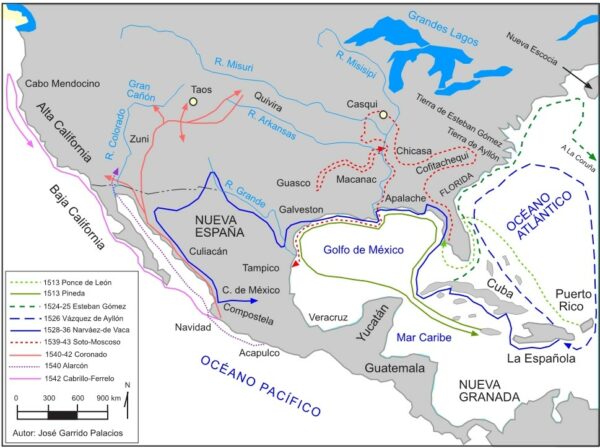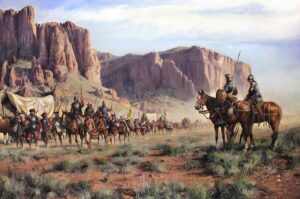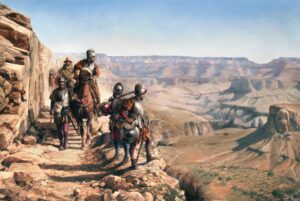Text adapted from the magazine The Hispanic Roots of the United States published by of Asociación Cultural Héroes de Cavite. The magazine is free to download and we encourage you to read it and share it!
The saga of Spanish exploration in the interior of the United States begins with a tale of survival from Pánfilo de Narváez‘s ill-fated expedition. In the early 1520s, Narváez led an expedition that ended tragically, but from its ashes rose one of the most remarkable stories of endurance and exploration. Álvar Núñez Cabeza de Vaca, along with a few others who survived the ordeal, journeyed through the southern Texas and the southwestern United States from 1528 to 1536, unveiling the vast and unknown lands that would later become integral parts of the United States..
This period of exploration, officially starting with the establishment of the Viceroyalty of New Spain in 1535, is marked by stories of resilience, discovery, and extensive cultural encounters. This era was characterized by the remarkable journeys of explorers like Álvar Núñez Cabeza de Vaca, whose survival and travels through southern Texas and the southwestern United States between 1528 and 1536 symbolized the Spanish adventurers’ tenacity and adaptability in the face of unknown territories.
The expedition led by Hernando de Soto from 1539 to 1543 marked a significant chapter in the exploration of the southeastern interior of the United States. His team ventured through areas such as Georgia, the Carolinas, and Tennessee, revealing the diverse landscapes and indigenous cultures of these regions. Their encounter with the Mississippi River, previously sighted by Álvarez de Pineda, underscored the importance of river systems in understanding the geography of the New World.
The continuation of De Soto’s expedition under Luis Moscoso de Alvarado through western Louisiana and southwest Texas further unveiled the vast and varied geography of the interior. Their journey to the Gulf of Mexico and the Panuco River highlighted the Spanish presence in these areas and the strategic importance of waterways in exploration and settlement strategies
The Southwest’s exploration was significantly advanced by the reconnaissance mission of Friar Marcos de Niza in 1539, paving the way for Francisco Vázquez de Coronado’s expedition. From 1540 to 1542, Coronado’s expedition, comprising a diverse group of Spaniards and Tlaxcalan allies, traversed through Arizona, New Mexico, Texas, Oklahoma, and Kansas. This journey not only aimed at finding precious metals but also at establishing Spanish influence in these new territories.
Juan de Oñate‘s expeditions at the turn of the century further solidified Spanish presence in the northern territories. The establishment of Santa Fe in 1610, now the oldest state capital in the United States, was a testament to the enduring legacy of Spanish exploration and settlement in the region. Oñate’s expeditions, characterized by objectives of peaceful expansion and Christianization, played a pivotal role in shaping the cultural landscape of the New World.
In response to external threats and regional challenges, Spain expanded its influence through southern Texas during the late seventeenth and early eighteenth centuries. The founding of the San Antonio de Valero Mission and the town of San Antonio along the San Antonio River in 1718 underscored the strategic importance of these settlements in Spanish colonial strategy.
The role of Spanish missions and presidios in safeguarding the territories was crucial. The soldiers, known as presidiales or soldados de cuera, were instrumental in defending the frontier and maintaining the Spanish presence in the southern United States.
From the Dictionary of the Royal Spanish Academy, a presidio is a city or fortress that could be garrisoned with soldiers and another is garrison of soldiers that was posted in squares, castles and fortresses to guard and defend them.
Furthermore, the journeys of missionaries like Jesuit Eusebio Kino and Franciscans friars Francisco Garcés and Silvestre Vélez de Escalante, along with military figures such as the Anzas, highlighted the Spanish efforts in exploring and understanding the vast landscapes of the interior. The activities of comancheros and ciboleros, who ventured far beyond established European settlements, were indicative of the interactions and trade relations with Native American tribes.
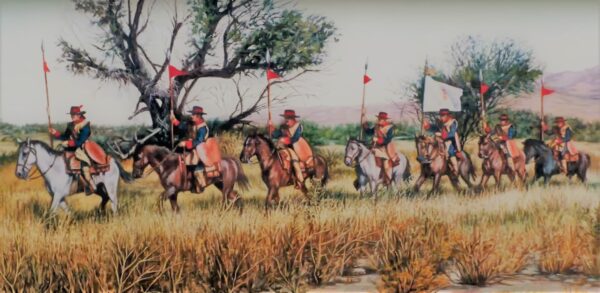
Dragones de cuera.
By the eighteenth century, Spanish military engineers and cartographers had produced the first maps of much of North America. These maps were instrumental in documenting the geography of the continent and paving the way for future exploration and understanding of the New World.
The era of Spanish exploration in the interior of the United States profoundly influenced the geographical, cultural, and historical narrative of the nation. It embedded a rich Spanish legacy into the fabric of American history, reflecting a period of unparalleled exploration and encounter.
Share this article
On This Day
- 1503 Battle of Cerignola (Italy).
- 1522 Santiago de Cuba is granted the city status by Carlos I.
- 1589 Margarita de Saboya is born.
- 1611 Archbishop Miguel de Benavides founded the University of St Thomas in Manila.
- 1777 José Primo de Rivera, Hero of the Sieges, was born in Algeciras.
History of Spain
26 August 2020
27 January 2021
Communism: Now and Then
23 December 2022
28 July 2021
